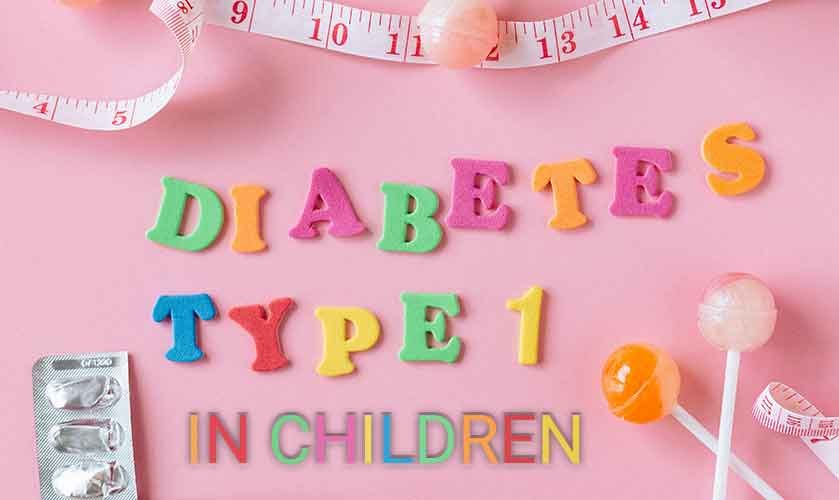Children and Diabetes
Diabetes is a chronic disease that affects the breakdown of sugars(carbohydrates) and the formation of energy in the body. It is caused due to insufficient insulin production from the pancreas or no production at all. Diabetes is not only limited to adults but can be developed in children too. There are two types of diabetes type 1 and type 2, of which type 1 is more common in children.
In type 1 diabetes, the pancreas does not produce enough insulin or no insulin. Insulin is a hormone responsible for managing blood sugar levels in the body. While in type 2 the body cells are unable to participate in using insulin, though the body is still producing it.
The symptoms for both type 1 and type 2 are similar and appears gradually. The dark areas of skin such as around the neck and in the armpits are also common.
Type 1 diabetes in children

Type 1 diabetes can develop at any age, the peak periods are age from 5-6 years and then age 11 to 13. The first noticeable symptom is how frequent the child urinates, especially at the night. Toilet trained children may also be bedwetting in diabetes. Also, the other symptoms like feeling thirsty, tired, losing weight and frequent hunger.
Early identification of type 1 diabetes is compulsory as the high blood glucose levels and dehydration caused due to uncontrolled diabetes can be dangerous and can put children on intravenous insulin and fluids in emergency or critical care units.
Type 2 diabetes in children

Type 2 diabetes was known as “adult-onset” because children didn’t usually get affected by the disease. Over time, with the increasing rates of child obesity, many children have been diagnosed with type 2 diabetes as well. This includes young children aged 10 years. Apart from being overweight, there may be other factors that cause diabetes in young children. If some of the family members have had diabetes, it can pass to the children or if the mother herself has had diabetes during pregnancy, she can transfer it to the child. This condition is called gestational diabetes.
Managing diabetes in children

There is no cure for diabetes, however, it can be managed with some easy and beneficial lifestyle tips. Managing diabetes includes frequent blood sugar monitoring, treatments like insulin therapy and adopting healthy habits. Insulin therapy involves multiple injections either rapid-acting or long-acting. Management of blood sugar and keeping them at normal range reduces the risk of long-term health issues related to uncontrolled blood sugar. Along with a healthy diet, a 30-minutes exercise is a must. In the case of children, playing, running or any physical activity will be good.
What should parents do?

Parents should guide their children in managing their blood sugar and teach them what to eat what not to eat. Children above age 7 have enough motor skills to understand their health condition and to take insulin injections under the supervision of an elder. Also, they can check their blood glucose levels multiple times a day using test strips and a blood sugar meter.
If your children take excessive insulin, they can experience low blood sugar levels( hypoglycemia) which can cause a rapid-hearbeat, nausea, tiredness, muscle weakness and even fainting.
On the other hand, if your child takes too little insulin, noticeable symptoms can appear such as weight loss, frequent urination, thirst, hunger.
Early management of good habits in a young child affects their future as well. The habits developed today will save them from health complications that may occur as the child ages.
Talk with the doctor regarding all your doubts about diabetes management in children.